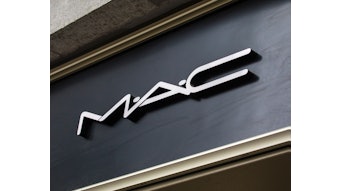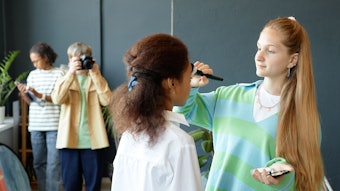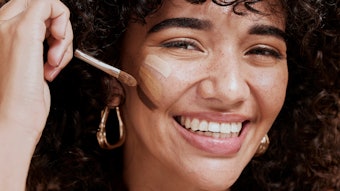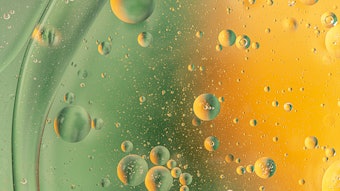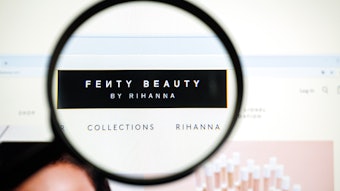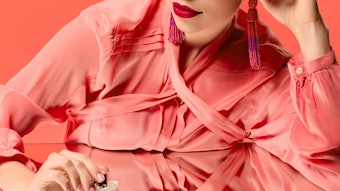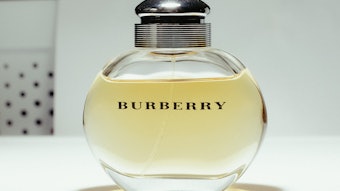Editor’s note: An unabridged version of this article, including formulas and additional technical content, ran in the February 2013 issue of GCI sister publication Cosmetics & Toiletries. All rights reserved.
BB cream has its origins in northern Germany in the 1960s, where dermatologist Christine Schrammek, MD, invented it to protect the skin of one of her surgically treated patients.1 These creams did not become popular until they were introduced to Korea in 1985, where they currently occupy a large market share of the beauty market. Skin lightening had been commonplace in Asia, but modern skin-lightening products such as BB creams differ greatly from those used in the past. In Japan, the Geisha adopted many methods to lighten the face color, including the application of heavy, white makeup. Following folk tradition, Chinese women ingested minced pearls to obtain skin lightening, and past lightening products have been formulated with phenol derivatives such as hydroquinone, which has been associated with side effects. Alternatives included foundations that imparted heavy, unnatural results. Tinted moisturizers were then introduced, which were less binding and offered some pigments, but did not correct underlying skin color.
A fundamental principle of color and light physics became clear, as understood by Japanese and Korean women—a complexion cannot be bright if it does not receive illumination from the lower skin layers. This principle was well-known by painters of the Renaissance who prepared the base of the canvas with a bright white to allow pigments to perform with enhanced shine and brightness. Similarly, Asian women have been known to apply a thin layer of cream or “base” containing white pigments and fillers first to enhance the luminosity of skin tone provided by the foundation that followed.
BB stands for “blemish balm” in Asia or “beauty balm” in some parts of Europe. It is defined loosely as product that combines serum, moisturizer, base cream, foundation and sunscreen in one. The success of BB creams has been aided by the discovery of spheronized pigments coated with layers of transparent materials. BB creams must be multifunctional, easy to use, have immediate results and impart a natural look. Only recently have BB creams seen popularity in the Western world, where large beauty brands have launched their versions to eager consumers.
BB Cream Formulations
In general, BB creams consist of oil-in-water (o/w) emulsions of medium to medium, low viscosity (creams and lotions) with easy application. This form allows the contemporary application of both hydrosoluble and oil-soluble ingredients and provides better delivery, light cooling effects and quick drying after distribution. The final perception of absorption, typical of an o/w emulsion, is also guaranteed and supported by adequate amounts of emulsifiers. In BB creams, emulsifiers are generally used at slightly higher amounts than in standard emulsions.
The skin color of consumers purchasing BB creams varies widely; therefore, opacifying effects in these formulations also vary from strong to delicate. These are obtained with fillers like kaolin and synthetic mica, but mostly using mineral pigments. To provide a natural appearance and invisible coverage, mineral pigments are coated with layers of equalizing agents, which allow for a special reflection of the illuminating light. Amino acid and silicone are the most successful coating agents for their compatibility with skin proteins and their inertness.
Titanium dioxide, providing the white opacity effect, is frequently accompanied by iron oxides (also in their coated form) to obtain light skin colors. The proper selection of pigments is related to matching the complexion of a specific market. In general, Eastern countries require a higher hiding effect while Western products are more transparent.
In general, the amount of mineral pigments in BB creams is noticeably lower than in foundations, varying between 0.5–5%. The hiding and wrinkle-concealing effect is obtained with soft-focus filling ingredients that optically mask the wrinkle signs.
For skin lightening and illumination, the most successful skin-lightening actives remain vitamin C and its hydrophilic and lipophilic derivatives, which are well tolerated by the skin and promote the production of collagen fibers. They need to be protected from oxidation in the formula with sulfites.
In the skin-lightener market, many raw material suppliers offer several alternatives. In a patent, an adenosine derivative is reported to depigment the skin.2 In another patent, the illumination is provided by micron-sized titanium dioxide combined with pearls coated with a combination of titanium dioxide, mica and silica.3
An array of vegetal extracts are also the source of several efficacy claims related to BB creams. Among them, Portulaca oleracae extract is used to support the efficacy of vitamin C by providing anti-inflammatory and antioxidant actions. The powerful antioxidant Daniella densifolia extract has recently been claimed as a powerful skin-lightening agent.4 Also, a blend of extracts from cucumber, white mulberry and hibiscus is claimed to whiten skin by acting at several levels of pigmentation.
Many BB creams also are formulated with actives that stimulate skin renewal and provide anti-inflammatory effects. Even the remineralizing effects of thermal water are considered useful for their replenishing effects of the oligo elements that correct skin enzyme function while toning and plumping skin. Thermal water containing salts is able to perform a buffering effect on the cutaneous pH, compensating the disequilibrium-inducing effects of environmental pollution.
Moisturization is usually obtained in a BB cream through a combination of short- and long-term actives. Hyaluronic acid is the model molecule for long-lasting water coordination. At the same time, it provides a velvety sensory feeling and easy application to the skin. Short-term moisturizers and humectants associated with hyaluronic acid include glycerol, propylene and butylene glycols and the recent, silky-feel humectant isopentyldiol.
Appropriate moisturization for very dry skin requires the selection of a combination of ceramides, sterols and fatty acids triglycerides. In general, BB creams are designed for consumers with oily skin, with actives and fillers that support the adsorption of excess sebum and avoid the development of shine for cutaneous secretions.
BB creams should also provide both UVA and UVB protection to avoid the stimulation of melanocytes and the consequent production of melanin. Protection from UVA rays hinders the oxidative stress induced by the longer wavelengths, which give rise to free radicals and skin cell damage. This can be obtained with the usual sunscreen ingredients. BB creams are available at SPF 15 and 35 to maximize protection.
Additionally, recent BB creams combine the above mentioned functional parameters related to the correction of skin color defects to the concept of long-term prevention of pigmentation disequilibrium. In this respect, the renewal, antioxidant, free radical prevention, anti-glycation, plumping, etc., that are normally associated with anti-aging products can be added to the formula to complete and sustain immediate skin lightening with more durable rejuvenation effects. Skin aging results in a pronounced loss of skin elasticity and its capability to reflect light. Progressive graying of skin is the result. Biologic mushroom ferments have been proposed to counteract this effect. For improving the desquamation process, one ferment from the coral reef is reported to stimulate the desquamation and differentiation markers, regenerating the skin and providing a smoother, more even appearance.
The Future and CC Creams
New to the market from Korea are CC creams, which are said to combine all the skin benefits of BB creams with better coverage. One example is Vichy’s Aeratint Pure Cream Foundation, which claims all-day velvety feel, moisturization, sun protection and soothing. In other words, a perfected machine for rapid but complete skin care before daily exposure to the environment. (See Next Up: CC Creams for more market information.)
BB creams are the perfect hybrid product for a number of consumers: for those seeking something different from a foundation; for young adults just entering the world of skin care; and for consumers looking for better illumination from makeup. For this multitasking product, the future looks bright.
References
- BB Cream: The Next Big Thing in Beauty, The Huffington Post, www.huffingtonpost.ca/the-experts-at-garnier/bb-cream_b_1214401.html (Accessed Mar 11, 2013)
- FR 2,900,334, Cosmetic composition comprising substitute adenosines for depigmentation of skin, L’Oréal (Nov 2, 2007)
- JP 2007, 291,066, Cosmetic compositions for covering uneven skin color, Kosei Co. , Ltd. (Nov 8, 2007)
- T Mammone, et al, Modification of skin discoloration by a topical treatment containing an extract of ,em>Dianella ensifolia: a potent antioxidant, J Cosm Dermatol, 9(2), 89–95 (2010)
Luigi Rigano, PhD, is a consultant for the cosmetics industry, co-director of the Institute of Skin and Product Evaluation (ISPE), and head of Studio Rigano Industrial Consulting Laboratories, a laboratory he founded in 1986. He spent more than 15 years in R&D, production and technical positions at Unilever, Intercos, Givaudan and Schering-Plough Corp., and is an active member of the International Federation of Societies of Cosmetic Chemists (IFSCC) and of the register of chemists in the Lombardia region of Italy. Rigano serves as a consultant at the Milan Court and has authored more than 80 scientific articles on cosmetics, aesthetics and dermatology.
